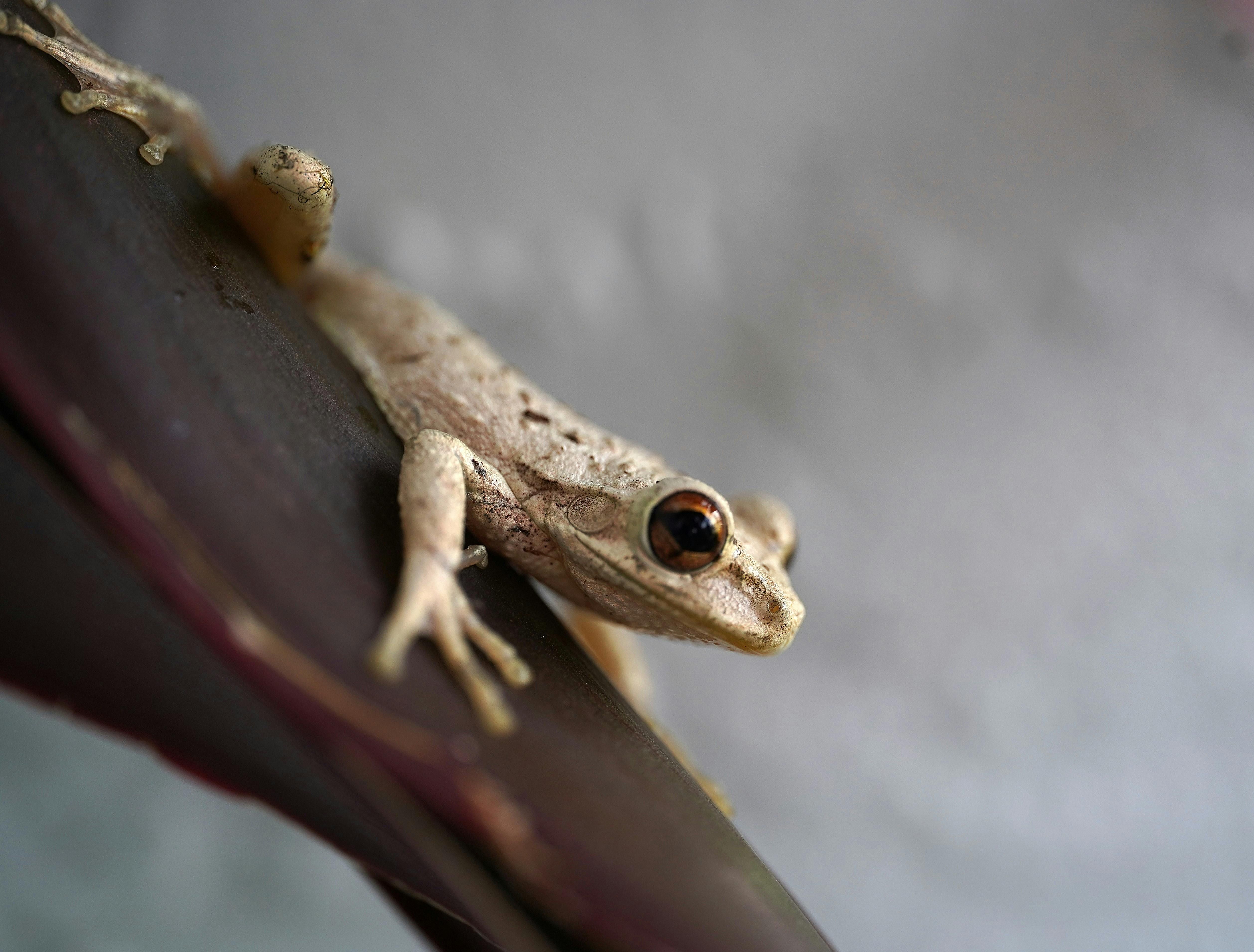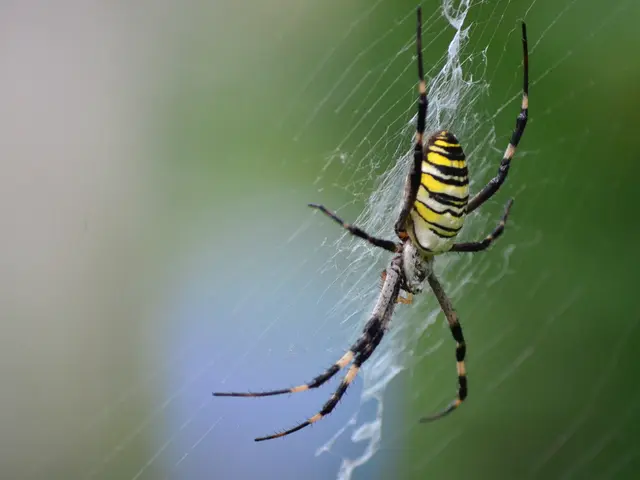Strategies for Dealing with Cuban Treefrogs Infestation in Your Backyard
A Guide to Handling Cuban Tree Frogs and Protecting Your Garden
The Silent InvaderThe Cuban treefrog (Osteopilus septentrionalis) has been making its unwelcome presence known in the U.S. for approximately a century. Originally spotted in Florida, this invasive amphibian has subsequently spread across the Southeast. "Cuban treefrogs are problematic due to their consumption of native frogs, competition for habitats, and their impact on biodiversity," states Steve Johnson, PhD, a professor of wildlife ecology and conservation at the University of Florida. "Yet, we’re unsure of their exact population size."
Hailing from Cuba, the Cayman Islands, and the Bahamas, these frogs seem to be expanding their reach with the help of human-assisted transportation. They've hitched rides on ornamental plants from nurseries, cars, trailers, and boats to reach new states. "Although we're not entirely certain about the locations of established populations, we've received reports of them in coastal Georgia and Louisiana," notes Johnson. "It's likely they have also settled in coastal Alabama and Texas."
- Steve Johnson, PhD, is a professor of wildlife ecology and conservation at the University of Florida.
Venturing into the Wonders (and Dangers) of Cuban Tree Frogs
These mischievous frogs take refuge in hidden corners such as behind shutters, siding, and other protected areas around homes. In both urban and forested areas, they snack on local native species and appear to be contributing to the decline of some native treefrog species, like the squirrel treefrog, as per Johnson. Tadpoles of Cuban treefrogs feed on the tadpoles of native species.
Cuban treefrogs may find their way indoors through roof pipes, and they can clog your sinks, showers, and toilets while searching for moisture. You might even have an unexpected encounter while sitting on your throne! Their soft calls at night might keep you awake if they reside near bedroom windows. Additionally, they love soiling homes by defecating on exterior walls and windows as they feed on insects.
Be extra cautious when you come across these treefrogs because their secretions can irritate the mucous membranes of people and pets. Whilst their toxins are not fatal to pets like the invasive cane/buffo toad’s venom, they may still sicken your pets or cause excessive salivation, says Johnson.
Spot the Frog! - Identifying Cuban Tree Frogs
Distinguishing these frogs from their native counterparts can be a challenge, as Lisa Thompson, spokesperson for the Florida Fish and Wildlife Conservation Commission, explains. "Cuban treefrogs come in a range of shades, from tan or light gray to olive green. Some also have patterns on their backs, while others are a solid color."
Cuban treefrogs grow up to 6 inches in length, and they have conspicuous bulging eyes and large toe pads. Their most distinctive feature is countless warts of assorted sizes on their backs, yet oddly enough, they have no warts on their heads. "If you’re passionate about preserving native wildlife, take the time to learn to identify these frogs accurately and distinguish them from native species," says Johnson.
Cuban treefrogs are primarily nocturnal. During the day and during dry weather, they can be found concealed in pipes, basements, tree cavities, and other humid and protected places.
Gardening in Harmony - Managing Cuban Tree Frogs
Errecting an impenetrable fortress against Cuban treefrogs on your property might be a lofty ambition, but there are steps you can take to make your garden less inviting:
- Avoid direct contact: Never touch these frogs with bare hands, and if you unavoidably come into contact with them, wash your hands thoroughly. Keep pets away from them as well, and reach out to your vet immediately if your pet has inadvertently taken a bite.
- Protect your pipes: Cover stand pipes on the roof to prevent Cuban treefrogs from crawling down into your plumbing.
- Eliminate standing water: Cuban treefrogs prefer small artificial water sources such as buckets, bird baths, ornamental ponds, clogged gutters, rain barrels, flower pots, kiddie pools, and water troughs. Regularly empty these water sources to help eradicate mosquito breeding sites.
- Eliminate eggs and tadpoles: If you spot eggs or tadpoles in an artificial body of water, it is likely the Cuban treefrog. Dump the water, mimicking the natural process of a breeding pond drying out before a tadpole transforms into a frog, as Johnson suggests.
- Monitor ornamental ponds: Check these in spring and summer, particularly after heavy rains, to scoop out eggs and tadpoles with an aquarium net and discard them.
- Maintain swimming pools: Ensure your swimming pool isn't utilized as a breeding site.
- Inspect birdhouses: Cuban treefrogs like to lair in birdhouses, so periodically examine these spaces.
- Submit a sighting: Since the presence of Cuban treefrogs is well-documented throughout the state, it's not necessary to report their appearance in Florida. However, if you reside outside of Florida, submit your sighting here to assist scientists in tracking their distribution.
- Consider relocation: To support and champion native species, scientists suggest the humane removal of Cuban treefrogs. If you're uncomfortable with the task yourself, seek the assistance of a nuisance wildlife operator.
- Stay vigilant: According to Johnson, "This isn’t a one-time task. You’ll need to continuously keep your guard up and periodically check your garden."
- Steve Johnson, PhD, suggests that individuals dedicated to preserving native wildlife take the time to learn to accurately identify Cuban treefrogs, as they can be difficult to distinguish from native species.
- In addition to affecting biodiversity and consuming native frogs, Cuban treefrogs have been linked to the decline of native treefrog species, such as the squirrel treefrog, according to Steve Johnson.
- Activities like eliminating standing water, erecting an impenetrable fortress around pipes, and monitoring ornamental ponds can help make your garden less inviting to Cuban treefrogs, as suggested by Steve Johnson.
- Cuban treefrogs have a unique appearance, with conspicuous bulging eyes, large toe pads, and countless warts of assorted sizes on their backs, unlike any native species, as Lisa Thompson explains.
- The Cuban treefrog's secretions can irritate the mucous membranes of people and pets, though their toxins are not fatal to pets like the invasive cane/buffo toad's venom, as Steve Johnson points out.




